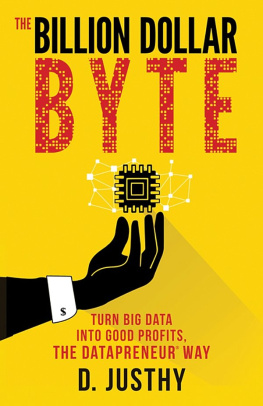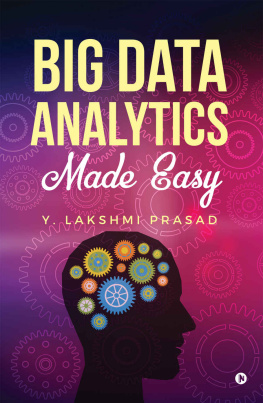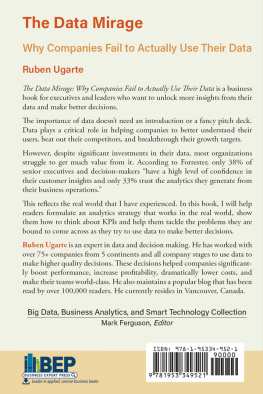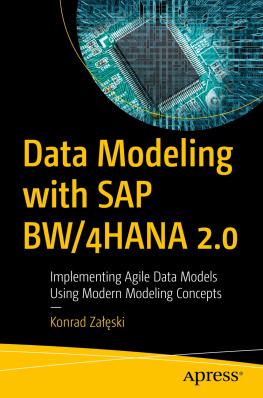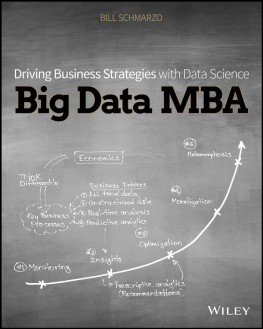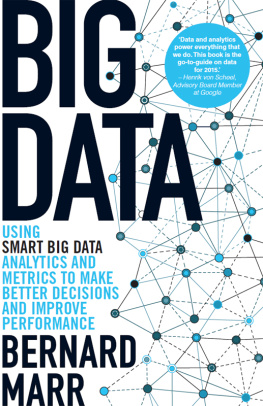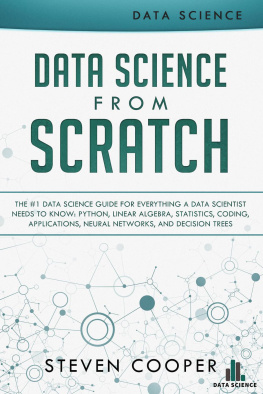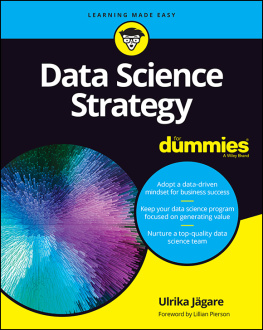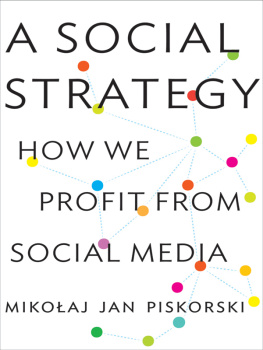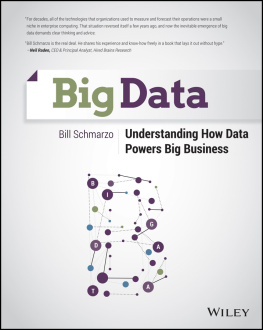THE BILLION DOLLAR BYTE
Praise for
THE BILLION DOLLAR BYTE
Data As An Asset (DAAS) Indexis a digital age innovation that was inspired by my first book One Simple Idea. A few years from now, we might wonder how we managed data without it all these yearsHats off to Justhy for breaking down a complex topic and making sense of it.
Stephen M Key , Inventor, Author of One Simple Idea Series
This is a simple and straightforward writing about Why and How to succeed through Data & People in the Digital Age.
Alexandrina Scorbureanu, PhD , Head of Performance Management for Information & Digital, Assicurazioni Generali Group Hq., Italy
THE
BILLION DOLLAR
BYTE
TURN BIG DATA INTO GOOD PROFITS,
THE DATAPRENEUR WAY
D. JUSTHY

NEW YORK
NASHVILLEMELBOURNEVANCOUVER
THE BILLION DOLLAR BYTE
TURN BIG DATA INTO GOOD PROFITS, THE DATAPRENEUR WAY
2018 D. JUSTHY
All rights reserved. No portion of this book may be reproduced, stored in a retrieval system, or transmitted in any form or by any meanselectronic, mechanical, photocopy, recording, scanning, or otherexcept for brief quotations in critical reviews or articles, without the prior written permission of the publisher.
Published in New York, New York, by Morgan James Publishing. Morgan James is a trademark of Morgan James, LLC. www.MorganJamesPublishing.com
The Morgan James Speakers Group can bring authors to your live event. For more information or to book an event visit The Morgan James Speakers Group at www.TheMorganJamesSpeakersGroup.com.
ISBN 978-1-68350-428-3 paperback
ISBN 978-1-68350-429-0 eBook
Library of Congress Control Number: 2017901192
Cover Design by:
Rachel Lopez
www.r2cdesign.com
Interior Design by:
Bonnie Bushman
The Whole Caboodle Graphic Design

In an effort to support local communities, raise awareness and funds, Morgan James Publishing donates a percentage of all book sales for the life of each book to Habitat for Humanity Peninsula and Greater Williamsburg.
Get involved today! Visit
www.MorganJamesBuilds.com

CHAPTER 1
ARE YOU DATA PARTYING LIKE ITS THE NINETIES OR ARE YOU JUST STUCK?
I always tell my traders that they wouldve loved the 1990s because it was a fairly easy time to make money.
Steven A. Cohen , Businessman, Founder of Point72 Asset Management and S.A.C. Capital Advisors
T he 1990s were a good time for enterprise technology businesses and IT departments in companies. It was the run-up to the dot-com era and preceded our current information revolution by many decades. With the advent of the Internet and the ubiquity of personal computers, businesses could suddenly automate many business processes for the first time.
This was the nascent age of big data, but that term was yet to see widespread adoption. Business didnt always understand the changes that were taking place. We had not planned for, nor anticipated, the age of big data. The closest businesses of the time came to truly understanding big data was through the use of very large databases (VLDB). Companies did not fully understand the relationship between business processes and the data trails they left behind. Few enterprises, especially traditional institutes such as banks and insurance companies, gave data play and say. They didnt take data seriously enough to fully govern its collection and use.
However, companies did understand that they needed to spend on technology and data. For the first time, businesses recognized that information technology provided competitive advantages and they began investing heavily. Billions of dollars started flowing into technology investments. IT departments were flush with cash.
Those were heady, halcyon days for Information Technology (IT) professionals and executives. There was a real sense of excitement around enterprise technologies. Enterprises were implementing many new systems and applications. For large companies, this often meant millions or even billions of dollars in IT spending. Many long-standing companies, which we will refer to as traditional or legacy companies in this book, were saddled with old systems such as mainframe machines for which they had paid handsomely for decades until that point. The excitement around IT and new emerging technologies was now driving companies to replace these mainframe machines in an effort to move toward a client-server application architecture. At the time, this was novel. Client-server systems would divide tasks and workloads between servers and clients (i.e., service requesters). For these large corporations, this was a massive, and massively expensive, undertaking.
These kinds of massive IT projects were common in the 1990s. As a career starter, an analyst, and a consultant, I worked on many big projects, which were all data or information centric, building management information systems such as data marts, data warehouses, operational data stores, and the like. I helped British Telecom (BT) Research Laboratories in Ipswich, UK, make the jump from their legacy analog network to a new digital terrestrial network. I was a part of a team that was highly skilled in technology. At that point, I was also simultaneously consulting for Gatwick Airport Limited in London, delivering operational reports for the Operations Director based on a newly implemented client server system. The system was implemented by ICL, UK (which was acquired by Fujitsu). I remember, speeding on the A12 and the M25, leasing a different posh car every time I made a trip from Ipswich to Gatwick. Money did not seem to be an issue either for my clients or me. From a perspective of 2016, these kinds of jobs were expensive; I would say, very expensive. In the late 1990s, companies started working with much more data than ever before, updating systems, migrating data, and consuming information in an expensive and time-consuming manner.
These kinds of projects often turned out much larger than theyd first appeared to be. In the late 1990s and early 2000s, One2Onethe UK mobile network operator that later became T-Mobileembarked on the Big Number Change in the enterprise systems. I was leading a team that was responsible for preproduction testing and implementing the massive change in a terabyte-scale data warehouse. I had the luxury of a terabyte-scale database to play with. Our objective was to update the data warehouse and the related marts to reflect the national telephone-number format. The change seemed simple on its face; we were making a straightforward change to the numbering system. However, this caused downstream changes in many systems. We had to update over a billion records stored in a major mobile operators data warehouse. Many more systems were affected. What started off as a simple change started to become a saga. The project ran for over a year!
This may seem excessive, but the executive overseeing the project and his team of consultants were all pleased with our pace. They were happy to give us time. More importantly, they were happy to pay for the investment. They understood that the amount of data was huge and that the investment was a major one. They knew that the great data party of the 1990s was officially on and they wanted to be at the party! They were willing to invest and actually spend accordingly.
This unbridled enthusiasm for all things enterprise information technology made funding IT projects much easier in the 1990s than it often is today. As someone who has been in the industry for close to two decades and who has consulted with numerous large companies in various industries around the world, I can attest that IT departments were not financially pressured and scrutinized in traditional companies the way they often are today. Traditional companies primarily, but not exclusively, formed and came into their own prior to the Digital Age. What makes traditional companies traditional is that they do not necessarily utilize digital technology as a core function of their business models, nor do they necessarily use digital technology to drive their business processes. Nonetheless, traditional companies were happy to invest and spend in new technology. There was an excitement around new tools and new technologies. Most executives recognized that the tools were getting better and better.

